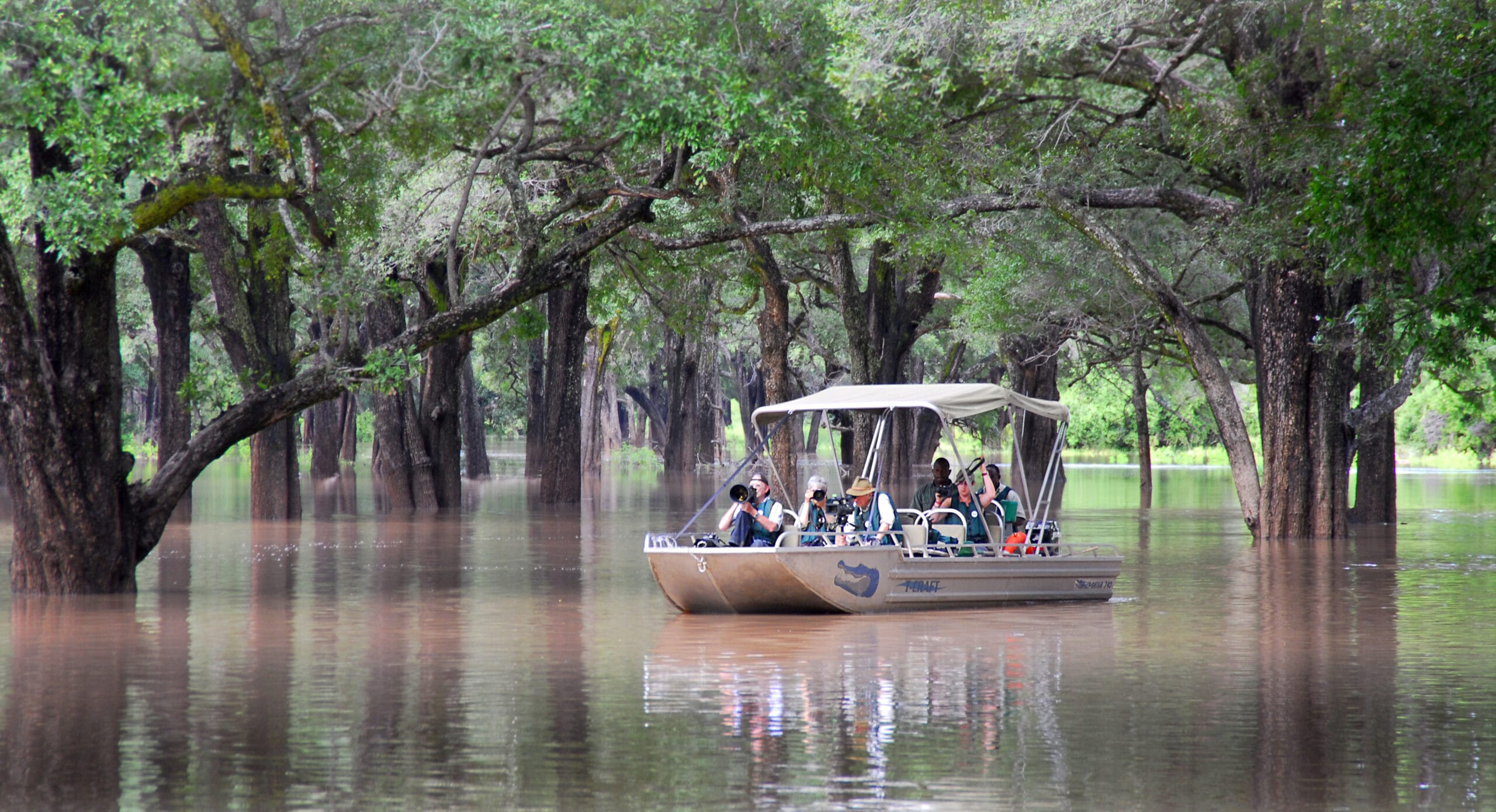The green season in Africa is an incredibly rewarding time to visit. There tend to be fewer people travelling and there are annual wildlife events to witness. In addition, as most people tend to prefer travelling in the dry season, rates in the green season tend to be significantly less. So, if you are happy to risk some rain you should be richly rewarded with the wildlife viewing. Here we look at three options for out of season travel.
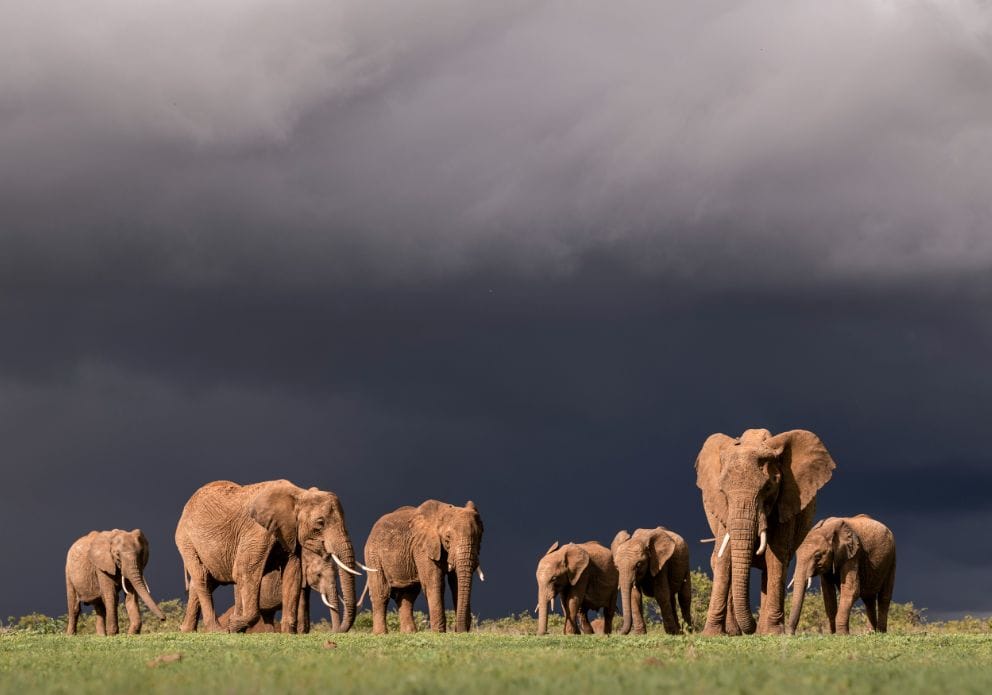
What to expect in the Green Season
There are many assumptions about travel in the green season, such as ‘it rains all the time’, ‘there are no animals’ or ‘the grasses are too tall to see the animals’. These statements are too broad to be accurate for every country, and whilst some or all of these statements may be accurate for some national parks – which is why they will be closed – it is by no means always the case. For those which offer a great safari in the green season the truth is;
- Rain tends to arrive in the form of storms which last a couple of hours and clear the air. Dramatic skies add an extra dimension to photographs – and it is very refreshing as well.
- Wildlife is still around – it just may not be as concentrated in certain areas. Animals, very often, move as a result of the rain to more nutrient rich grass plains.
- Grass height will very much depend on the country, and park, you are visiting. Some areas offer richer soils so grasses can be thicker, but animals – particularly cats who hate getting paws wet – love using any gravel roads around. Young wildlife is born, there are plenty of migratory birds and landscapes are verdant.
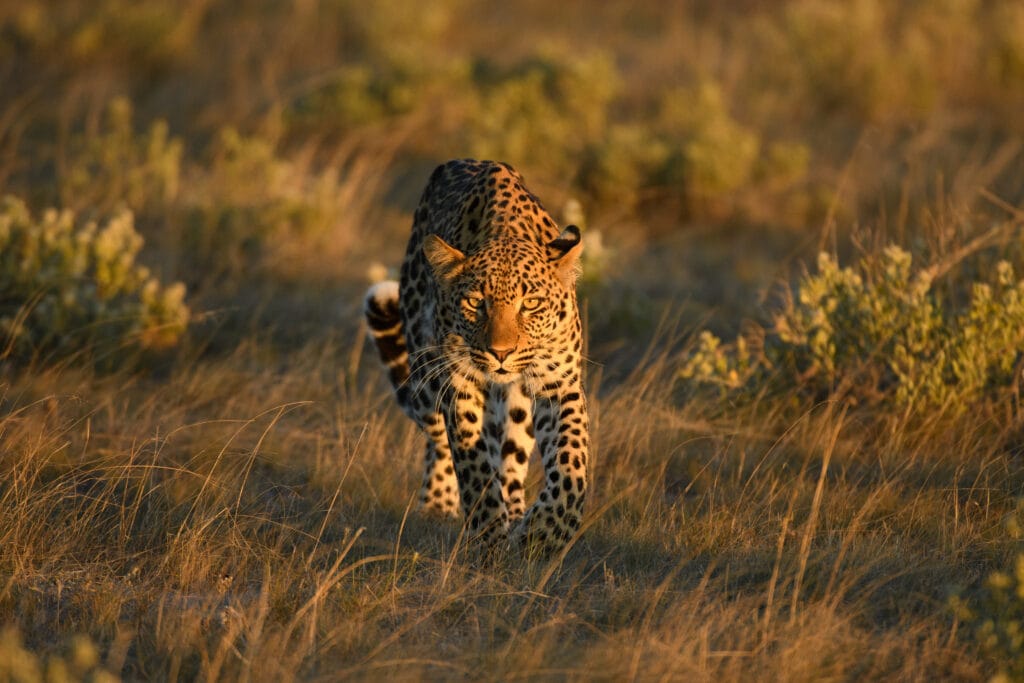
Zambia – The South Luangwa
Zambia is a wildlife rich country which has a number of national parks that are revered by safari aficionado’s with plentiful leopard sightings together with wonderful herds of elephant, giraffe, lions and much more besides. Traditionally Zambia is seen as a dry-season only destination when the wildlife congregates around the remaining water sources, particularly as the season progresses. This can lead to some exciting wildlife interactions.
The rains, like most of Southern Africa, typically start at the beginning of November and last until the end of March. It is a birders paradise with many migratory birds around and also plenty in their more colourful breeding plumages. Green season wildlife viewing is every bit as exciting with plenty of young wildlife around, often leading to exciting predator action. It is a time of re-birth and specialist safaris – such as seeing the Kasanka Bat Migration or visiting Liuwa Plains to witness the lesser known wildebeest migration across the plains.
By February the Luangwa River has risen sufficiently to enable river safaris, a wonderful way to explore and offering a totally different perspective as well. A couple of the remote bush camps have re-opened allowing you to experience boating through flooded mahogany groves and visiting the Yellow-billed stork colony, now thought to be one of the largest in Southern Africa. Walking safaris offer the chance to witness smaller things often missed when in a vehicle and with the pleasant temperatures it is a wonderful way to explore during this time of year.
Please Click here for an itinerary suggestion.
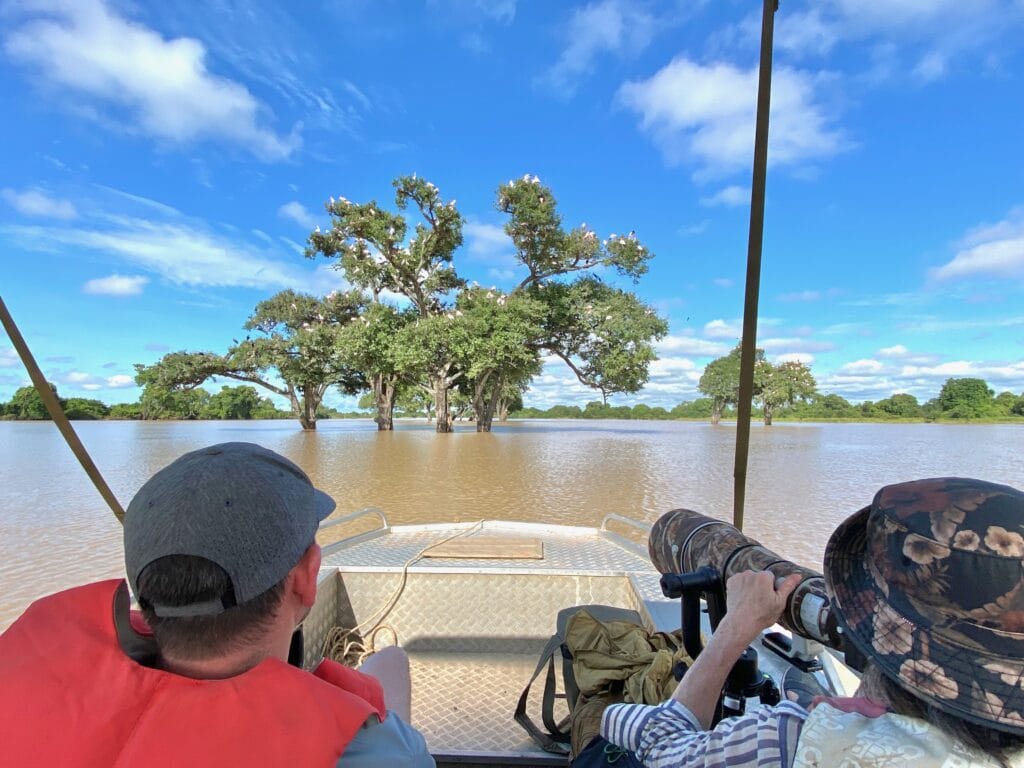
Botswana
A country which is excellent throughout the year, Botswana really is a safari lovers dream. With permanent land and permanent water, wildlife never has to move over great distances, though there are some wildlife events that take place at different times. With the rains arriving, like most of Southern Africa, in November the temperatures drop a little from their height in October. Sandy soiled, all camps remain accessible with many having their own airstrips as well. The Okavango Delta is likely to be at its lowest, revealing large open plains with wildlife congregating. For those who want to take to the waterways in a boat or mokoro, choose a camp located on a deep water channel.
Many of the antelope species will have their young at the start of the rains as there is plentiful fresh grass around for all. This in turn can lead to amazing predator action and the migratory birds arrive as well. The landscape is transformed; natures ability to recover can almost be seen overnight with fresh green shoots appearing soon after the first rain falls.
Botswana is also home to Africa’s second largest migration in Africa, zebra’s migrate from the Okavango Delta to the nutritious grass plains of Nxai Pan and the Makgadikgadi salt pans, which have been transformed from their barren ‘dry season’ look to rich verdant grass plains. Of course, with the number of animals migrating, the predators also move with them. In addition to all of this, the rates at the majority of camps will tumble in the green season – making it an even more attractive destination at this time of year.
Please click here for a sample itinerary.
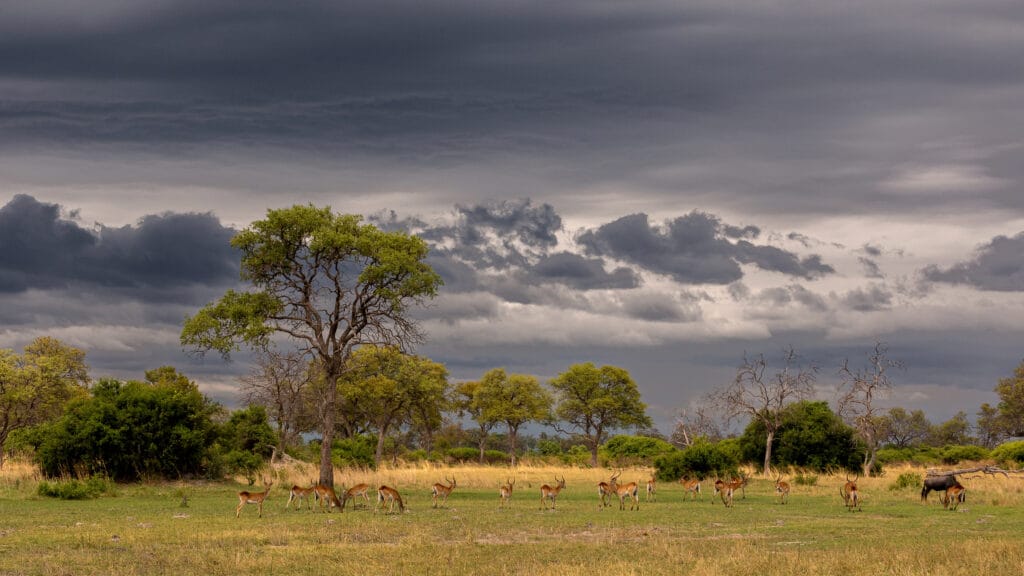
Kenya’s Secret Season
March is often seen as the start of the green season in Kenya, like the rest of East Africa, with temperatures increasing and the first rains usually starting towards the end of the month, continuing through May and into early June. Travelling in March, particularly to the Masai Mara, feels like a secret season; many people will visit Tanzania to witness the wildebeest migration on the Southern Plains of the Serengeti and there are fewer visitors to this world-renowned wildlife hotspot.
You can expect wonderful wildlife viewing – the resident wildlife of the Masai Mara is amazing with plenty of key African species such as lion, cheetah, elephant, giraffe and much more besides, to be seen. Birdlife is prolific and the dramatic skies, building into the first storms of the season, offer fabulous photographic opportunities with the lush green of the landscapes.
For those who like to combine with safari with time on the beach, the coast is also well worth visiting at this time of year. You can expect the same warm temperatures on the coast and the sea is perhaps at is best for diving and snorkelling between October and March, before any of the rains towards the end of the month. With seamless connections from the Masai Mara to parts of the coast it also offers a stress-free combination for some winter sunshine.
Please click here for a sample itinerary.
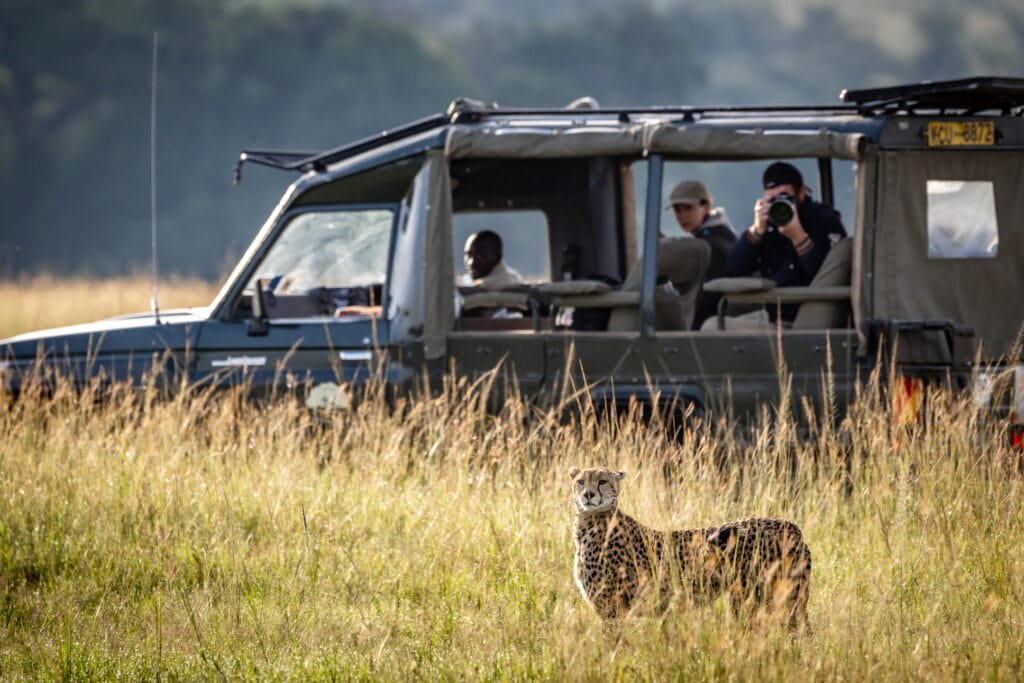
Conclusion
All too often we are led to believe that unless you travel in the so-called ‘peak’ or ‘high’ seasons your experience will somehow be less. This is by far from true; it may be different but often for the better – be it fewer others travelling, lower costs or even particular wildlife events. This is certainly the case for the green season in certain parts of Africa, and a trip at this time of year has the added advantage of some heat – away from the cooler climes of the European winter!
If you would like to plan a holiday to any of these destinations, or would like to discuss any other holiday to East or Southern Africa, please do get in touch with Lucinda and she would be delighted to help.
